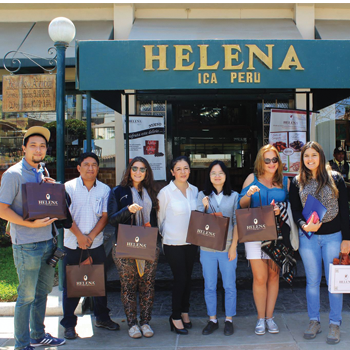
อาหารใหม่ “Novel Foods” คืออะไร?
โดย: รองศาสตราจารย์ ดร.ทรงศักดิ์ ศรีอนุชาต
Associate Professor Dr.Songsak Srianujata
Advisor
Institute of Nutrition, Mahidol University
songsak.sri@mahidol.ac.th
Full article TH-EN
ตามประกาศกระทรวงสาธารณสุข ฉบับที่ 376 พ.ศ.2559 เรื่อง อาหารใหม่ (Novel food) ซึ่งประกาศในราชกิจจานุเบกษา เล่ม 133 ตอนพิเศษ 159ง เมื่อวันที่ 15 กรกฎาคม 2559 และมีผลบังคับใช้ตั้งแต่วันที่ 16 กรกฎาคม 2559 ในประกาศฉบับนี้ให้คำจำกัดความ อาหารใหม่ หมายความว่า
(1) วัตถุที่ใช้เป็นอาหารหรือเป็นส่วนประกอบของอาหารที่ปรากฏหลักฐานทางวิชาการว่ามีประวัติการบริโภคเป็นอาหารน้อยกว่าสิบห้าปี
ข้อนี้อธิบายขยายความได้ว่า อะไรก็ตามที่เอามาใช้เป็นอาหาร แต่ไม่มีประวัติการบริโภคมายาวนานตั้งแต่ 15 ปีขึ้นไป หรืออีกนัยหนึ่งมีประวัติการบริโภคโดยทั่วไปน้อยกว่า 15 ปี จะจัดว่าเป็นอาหารใหม่ทันที ไม่ว่าจะเป็นตัวอาหารหรือส่วนประกอบของอาหารก็ตาม ทั้งนี้ ถ้าเคลมว่ามีการบริโภคมาตั้งแต่ 15 ปีขึ้นไป ต้องมีหลักฐานมายืนยันว่ามีการบริโภคเป็นอาหารโดยทั่วไป สำหรับในประเทศที่มีข้อกำหนดควบคุม เช่น สหภาพยุโรป กำหนดว่าเป็นอาหารที่ไม่ได้มีการบริโภคโดยทั่วไปในประเทศที่อยู่ในสหภาพยุโรป ก่อนวันที่ 15/05/1997 คือ ก่อนวันที่มีการออกกฎหมาย แต่ขณะนี้กำลังจะมีข้อกำหนดสำหรับอาหารที่มีการบริโภคทั่วไปในประเทศที่อยู่ในภูมิภาคอื่นนอกสหภาพยุโรป และกำลังจะมีรายละเอียดในการพิจารณา
(2) วัตถุที่ใช้เป็นอาหารหรือเป็นส่วนประกอบของอาหารที่ได้จากกระบวนการผลิตที่มิใช่กระบวนการผลิตโดยทั่วไปของอาหารนั้นๆ ที่ทำให้ส่วนประกอบ โครงสร้างของอาหาร รูปแบบ ของอาหารนั้นเปลี่ยนแปลงไปอย่างมีนัยสำคัญ ส่งผลต่อคุณค่าทางโภชนาการ กระบวนการทางเคมีภายในร่างกายของสิ่งมีชีวิต (Metabolism) หรือระดับของสารที่ไม่พึงประสงค์ (Level of undesirable substances)
ในข้อนี้อาจเข้าใจยากนิดหนึ่ง ความหมายที่สำคัญ คือ ถ้าวัตถุที่ใช้เป็นอาหารหรือเป็นส่วนประกอบของอาหารนั้นได้มาจากกระบวนการผลิตที่แตกต่างไปจากการผลิตทั่วไป เช่น ปกติเราเอามาบริโภคโดยการหุงต้มธรรมดา หรือกระบวนการผลิตที่ใช้กันทั่วไป เช่น การอบแห้ง การนึ่ง ทอด หรือย่าง หรือชง เป็นต้น แต่ใช้วิธีการเอามาสกัดโดยสารตัวทำละลายบางอย่างที่แตกต่างจากการบริโภคทั่วไป เช่น ปกติบริโภคโดยใช้การชงด้วยน้ำร้อน แต่ใช้สกัดด้วยสารตัวทำละลายอื่น เช่น แอลกอฮอล์เข้มข้น เป็นต้น สารตัวทำละลายที่ใช้สกัดนั้นอาจจะละลายเอาสารที่ไม่พึงประสงค์ออกมาได้ หรือทำให้รูปแบบของอาหาร รวมทั้งโครงสร้างของอาหารเปลี่ยนแปลงไปอย่างมีนัยสำคัญได้ เมื่อเอาใช้เป็นอาหารหรือส่วนประกอบของอาหาร อาหารที่ได้จะจัดเป็นอาหารใหม่ และเมื่อบริโภคแล้วอาจทำให้คุณค่าทางโภชนาการเปลี่ยนไป หรือทำให้เกิดการเปลี่ยนแปลงทางชีวเคมีในร่างกายผิดไปจากอาหารที่ได้จากการแปรรูปหรือการบริโภคปกติ
(3) ผลิตภัณฑ์อาหารที่มีวัตถุ (1) หรือ (2) เป็นส่วนประกอบ ทั้งนี้ ไม่รวมถึงวัตถุเจือปนอาหาร และอาหารที่ได้จากเทคนิคการดัดแปรพันธุกรรม
สำหรับข้อนี้ความหมายตรงไปตรงมา คือ ถ้าสารนั้นจัดเป็นวัตถุเจือปนอาหาร หรือเป็นอาหารที่ได้จากเทคนิคการดัดแปรพันธุกรรม จะไม่ถือเป็นอาหารใหม่ แต่จะเข้าข่ายเป็นวัตถุเจือปนอาหาร หรืออาหารที่ได้จากเทคนิคการดัดแปรพันธุกรรม และควบคุมโดยประกาศเรื่องนั้นๆ
Novel food, according to the Notification No.376 issued by the Ministry of Public Health and published in the Royal Government Gazette, volume 133, section 159 ง, published on 15 July B.E.2559 (2016), means:
(1) Material used as food or food ingredient that has been used as food in general less than 15 years. It can be elaborated further that any material that is used as food or food ingredient which has no evidence of safe use for general consumption from 15 years and more, it will be considered as Novel Food category. The evidence to support indicating that it has been used as food in general from 15 years or more must be document recognized by the official. It can be from the reliable source as government document, peer reviewed journal or historic document from official source. In some region as EU countries, novel food means “a food that was not consumed to a significant degree by human in the EU prior to 15/05/1997” (Regulation (EU) 1997/258). However, according to the new regulation “Regulation (EU) 2015/2283”, the definition is unchanged, but there are some considerations in the area of traditional food in the third countries outside Europe. It is considered to be novel food if it is new substance, or substance from new source, or using new technique of processing.
(2) Substance use as food or food ingredient obtained from processing other than normal or general processing of such food. These new processing may result in altering the composition, structure, form of that food, significantly. Such altering could affect the nutritional quality, metabolic process in the body, or the change in the level of undesirable substances.
In this item, it may be a little difficult to understand. However, it can be elaborate further as follows. The important meaning is that “the processing method or production method” which is not commonly used to obtain the food or food ingredient, such as those other than drying, steaming, frying, grilling, or extracting with water as examples of common processing. If the food or food ingredient is obtained by extracting with concentrated alcohol or other solvent which may extract undesirable component more than water extraction, the food or food ingredient obtained is considered to be novel food. This kind of process may alter the form or structure of the food, significantly. This may also alter the nutritional value of the food, and also it may alter the biochemical metabolism in human body.
(3) Food product contains substance as mentioned in (1) or (2) as ingredients. However, food additive and food obtained from genetically modified organism are excluded.
The meaning is strait forward, if it is classified as food additive or food obtained from genetically modified organism, they will be controlled under relevant notifications, such as food additive will be controlled under the notification No.281, food additive.




